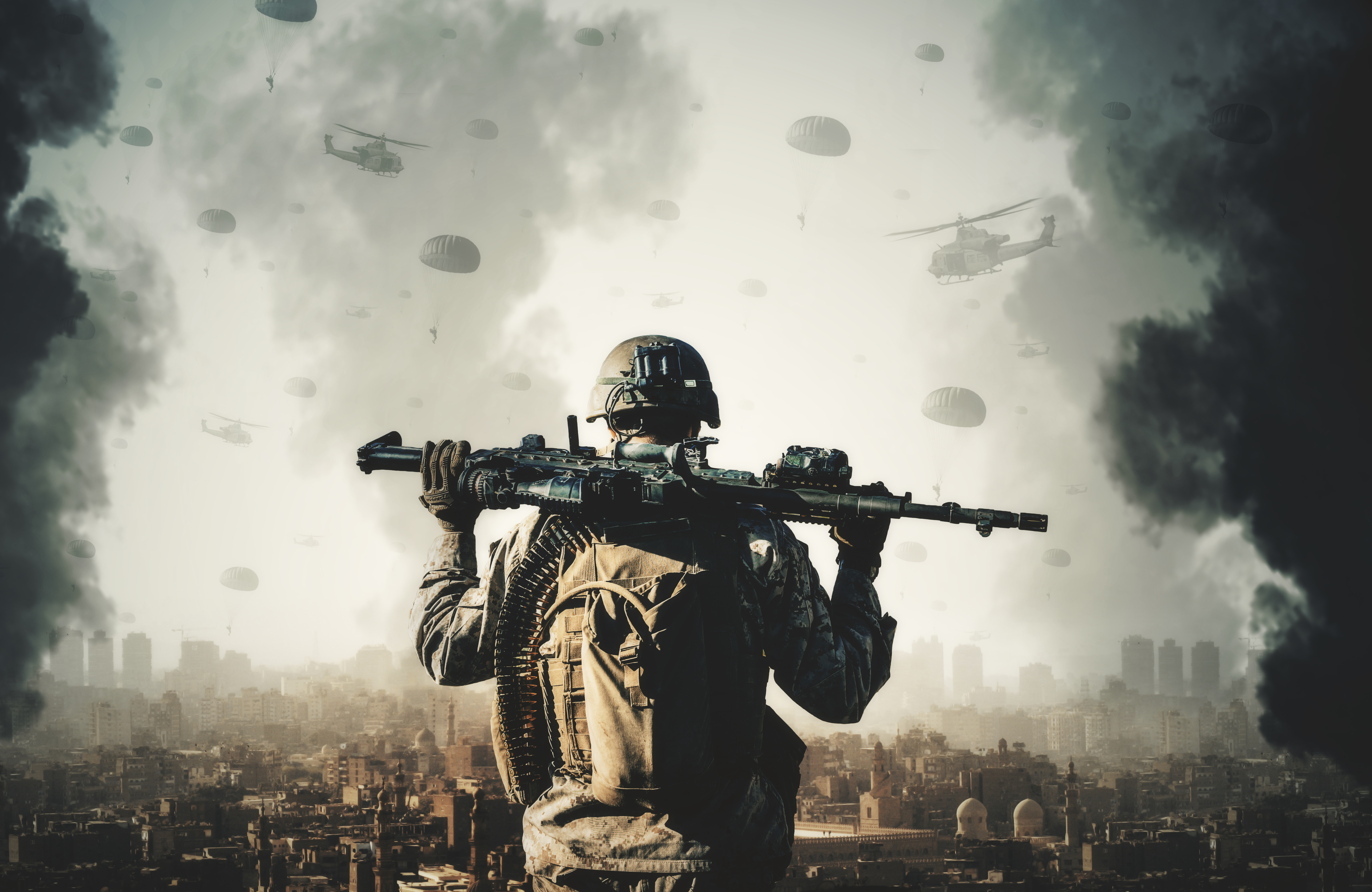The Truth about the Military
There’s a story to be written about what has happened to America’s military since Desert Storm. The ideal author would be Dr. Laura Schlessinger. She could call it, Ten Stupid Things Countries Do to Mess Up Their Lives.
“Chapter One: Trashing the National Defense.”
Or:
“How a country with no mortal enemies, that spends over $300 billion yearly on defense and related activities, can field a military that’s overworked, underappreciated, tormented by civilian agendas viciously advanced, slowly falling apart, and almost totally incapable of protecting the homeland.”
But Dr. Laura, doyenne du jour of the Psychobabble-Industrial Complex, is probably too busy to take on the task. So this series of three columns on the common defense in the late 1990s will have to fill in. Now’s a good time to write it. A seven-year debate/hissy fit is winding down. Barring catastrophe (or extreme embarrassment), not much will change before the millennium. So perhaps now’s a good time to take a look at where we stand . . . and at where we ought to stand.
The second column will deal with what’s going on strategically and how to think about preparing for it. The final column will address changing civil-military relationships. But let’s start off with a few examples of what went right within the armed services a few acts of military statesmanship that practically nobody knows about because, when they happened, the media and the republic were too fixated on sex scandals to bother.
Let’s mention some good decisions, if for no other reason than it’s time somebody did.
First, the Marines. They’re now seriously working a problem–urban warfare–that, for half a century, they’ve been reluctant to face. Street-fighting is a peculiarly ghastly form of combat, and one in which technological advantages are easily lost. The Marines have no taste for it, having known horrific losses during the World War II Okinawa campaign, Korea, and the Hue City ordeal in Vietnam.
But cities, especially Third World coastal megasprawls, are probably the most plausible battlefields of the future. So the Corps has taken on the task in its “Urban Warrior” exercises and numerous other activities.
It is entirely possible that the work now underway will be to 21st century warfare what the amphibious experiments of the 1920s and 1930s were to World War II–not just the development of new tactics and techniques, but the sine qua non of some future victory.
The Navy has also done well. For a century, it held that fleet-action on the high seas was its primary mission. But there’s no fleet out there left to fight. So the Navy chose, early-on, to recognize the fact and, in their doctrinal statements, ” . . . from the Sea” and “Forward . . . from the Sea” (CORRECT TITLES) shifted their emphasis to support of the land campaign. Shelving a proud tradition of independence wasn’t easy. Once the cliché ran, “The United States Navy will neither confirm nor deny that it’s part of the Department of Defense.” But no more. And while some analysts have criticized the new orientation as a means of finding new jobs for old weapons, the Gene Kranz Dictum (from the movie “Apollo 13” applies:
“I don’t care what anything was designed to do. I care about what it can do.”
If the Navy had a century-old mindset to deal with, the Air Force has only seventy. But the Air Force isn’t setting its tenets aside. Indeed, air power has barely started to demonstrate its potential. But the Air Force has done something harder. It is developing that potential in a way that tears at its institutional soul.
Since the 1920s, air power advocates have posited “strategic bombardment” (once massive, now precision) as an alternative to costly land campaigns. The concept has often been oversold, and no responsible officer or analyst today suggests that the country can do without strong ground forces. Indeed, because of a recent Air Force decision, the infantryman may have more job security than the pilot.
The soul of the Air Force has been formed around the belief that the key individuals are the flight crews, especially the pilots. An elite core of “operators” worked the wild blue yonder. Everyone else was in support.
But in their current doctrinal statement, “Global Engagement: A Vision for the 21st Century Air Force,” the service all but concedes that the day of manned (aka “inhabited”) flight may be ending. The document commits the Air Force to lead in developing unmanned aerial vehicles that will replace piloted aircraft in many functions, beginning with reconnaissance and surveillance, then on to combat. Further, according to the document: “We are now transitioning from an air force into an air and space force on an evolutionary path to a space and air force.” In this new service, “. . . any military or civilian member who is experienced in the employment and doctrine of air power will be considered an operator.”
Goodbye to the white scarf and goggles; let the geeks at the consoles have it all? Not hardly. At least, not yet. But the Air Force, like the Navy and Marines, has demonstrated its willingness to pursue excellence in the operational art of war, whether it accords with traditional preferences or not.
One service remains, conspicuous by its absence. This people’s Army is an institution in torment. Its problems are deeper and more complex; its reconceiving and restructuring will take longer; its moment of statesmanship has not yet come.
But it will. The Army of George Marshall and Omar Bradley, Creighton Abrams and Bruce Palmer, will find its way. And it is in nobody’s interest to see them fail.
Philip Gold is director of defense and aerospace studies at the Seattle-based Discovery Institute.
